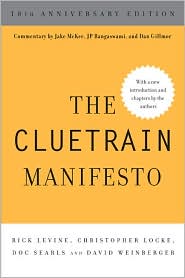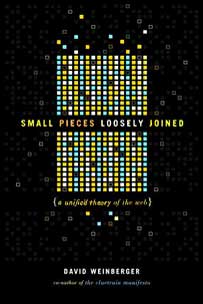April 17, 2009
[ugc3] Sustainable business models and long tails
Andres Hervas-Drane
Begins by noting the long tail in the market share of products. There’s empirical evidence that this is happening online. Why there? Standard answer: Supply side. But he wants to look at factors on the demand side that can affect this distribution.
He sets up a case where consumers have difference preferences and come to the market uninformed. In the offline world, search happens through word of mouth. They can search with evaluations or with recommendations. Recommendations come from consumers who searched with evaluations. Word of mouth results in a high concentration of sales.
Almost a third of Amazon’s sales are generated by recommendations. These are generated by users as meta-content, finding consumers who have similar preferences. This is taste-matching and it reduces sales concentration.
Then there are “artistic markets”: that increase the demand for niche producers and results in long term cultural variety.
Peyman Faratin talks about a case study of prediction markets. His main point: Scarcity is at play even in the UGC system. The new scarcity is of attention.
An incentive engineering problem is at foot in prediction markets. When you can’t bet real money, the incentives go down. The reward streams are delayed. You have to search for the market. There are significant transaction costs [which he goes over in some detail, but too hard to capture briefly…sorry]. That’s why prediction markets aren’t going very well; they’re lonely.
Solution: Reward the big hitters. Let them transfer their reputations. Give them content management rights. Rank markets and reputations. “Invisible hand of the algorithm: Recommendations.” Use widgets to let the market come to the user. [I missed the end of this. Sorry!]
Chris Derllarocas talksabout “Your Operations hvae become your New Marketing.” “Every customer is a potential brand ambassador or a lethal bran assassin.” E.g., in 2006, Comcast spent $100 M in advertising, wiped out by the youtube of a sleeping technician. UGC can make or break your business.
Most influential UGC occurs spontaneously and represents non-representative experiences. Companies need to take preventive measures. Consumers use UGC to decide if they should consume a product. Once they have, they decide what to report. Companies need to “Strategically re-engineer the consumption experience to spontaneously provoke the right mix of consumer content.”
Rules: Pay attention to extreme events. Move towards a culture that pays attention to outliers, positive and negative. “Redesign your monitoring practices and career incentives to accentuate the positive and eliminate the negative.” Also, “reasses yesterday’s yield management practices.” That is, make sure you do not systematically produce a small number of unhappy customers” (e.g., but routinely overbooking, or by routinely selling undesirable hotel rooms at very low rates). Also, get to know your power customers, i.e., the ones more likely to be vocal. They should receive “the special teratment that loyal big spenders used to receive ten years ago.” Also, not sock puppetry. Also, maybe have a Chief Perception Officer.
Q: You’re proposing an operational hit since we won’t be selling all the seats or rooms.
A: Yes. That’s the decision to be made. We need to make these decisions holistically. We don’t have the complete answer, There’s room for innovation.
Q: [me] This morning we heard that the population is not nearly as adept at using these tools as some of us (= me) would like to believe. This afternoon we hear about markets that are adept. How did you hear this morning’s research?
A: It varies by market. And consumers aren’t necessarily savvy. The UGC has effect even when they’re not savvy. You need to tier your efforts, taking account of the consumers’ Web savviness.
Q: How’s it work in other countries?
A: We haven’t done that research. Happy collaborate…
Q: How does this apply to B2B?
A: More limited.
Anindya Ghose will talk about combining textmining with econometrics. Firms want to know if there’s any economic value to social networks and UGC. How can they monetize UGC?
There’s economic value embedded in the content. E.g., product reviews, geo locations, online purchase behavior. His software mines the text and assesses the economic value of, say, a positive review and even more particular comments. E.g., “good packaging” lowers the value by $0.56 because customers expect superlatives. Particular keywords have particular monetary effects.
Hypothesis: The increasing availability of UGC is reflected in sponsored search metrics. And, yes, he found a correlation between the frequency with which key words are used in blogs and their cost-per-click on search sites. He’s researching whether there’s some sort of causal effect, but it’s not an easy problem. Hence, UGC can be monetized through sponsored search.
[Posted without re-reading. I have to prepare for my unprepared comments. I’m on a panel that’s supposed to be reflecting on the day.]








